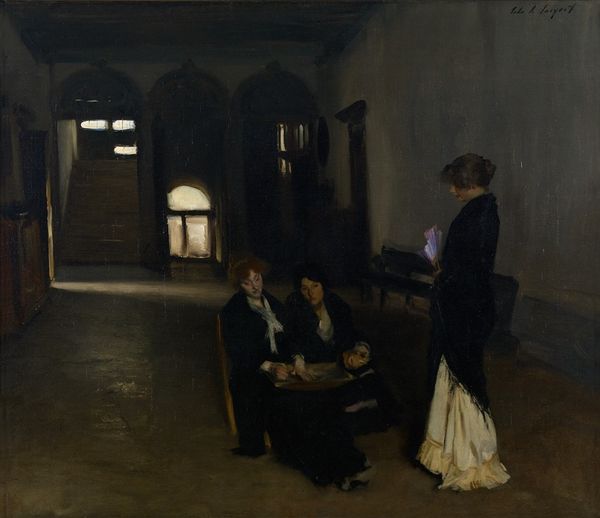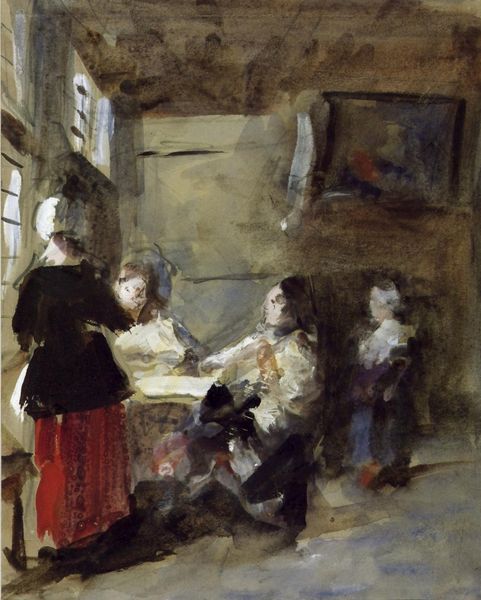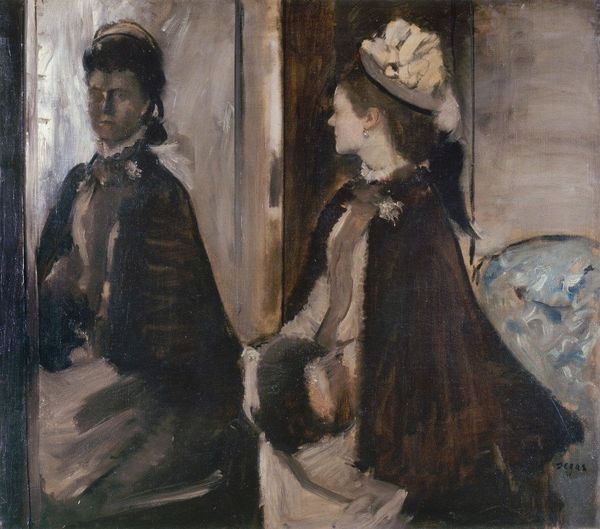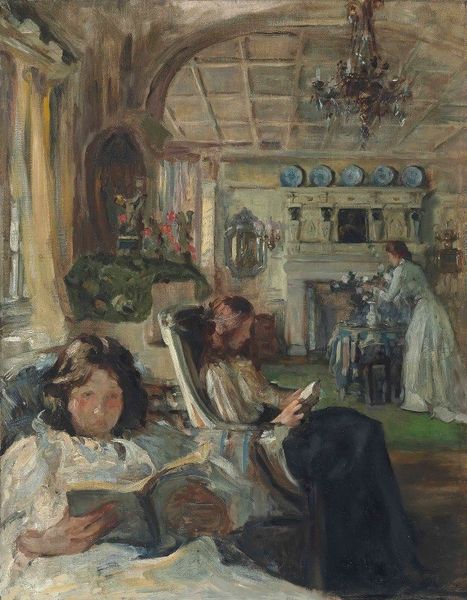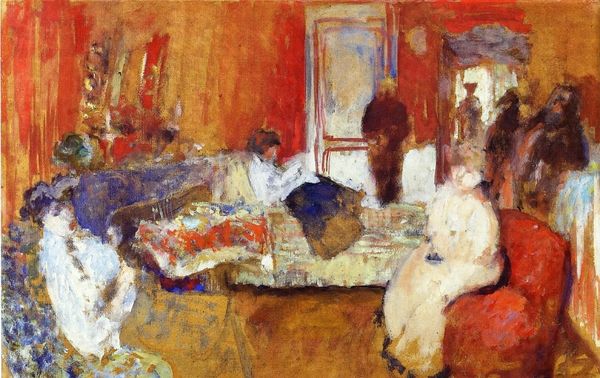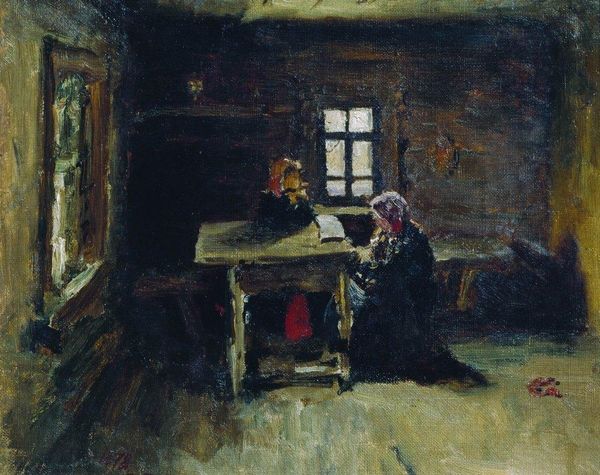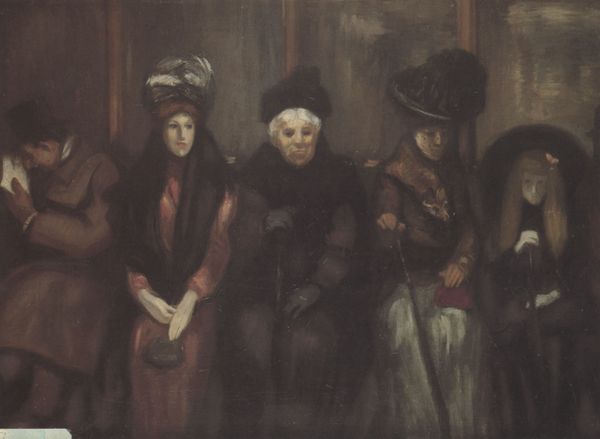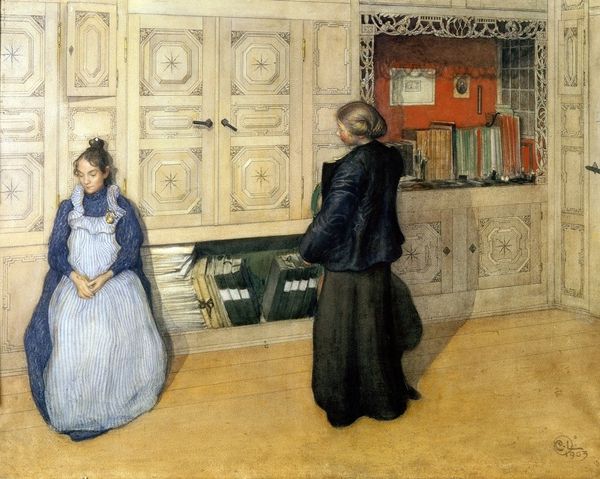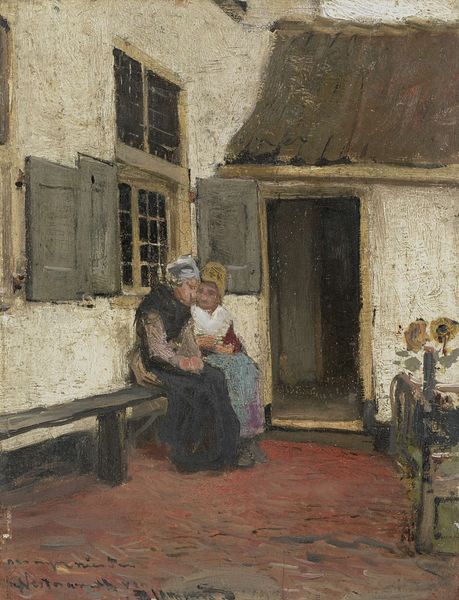
Dimensions: 49.8 x 60.7 cm
Copyright: Public domain
Editor: This is John Singer Sargent's "A Venetian Interior," painted in 1882, and rendered in oil. It has a subdued, almost secretive feel, don’t you think? The figures seem caught in a private moment. What do you see in this piece? Curator: Immediately, I’m drawn to the shawl, or the “fazzoletto,” worn by the women. Beyond simple modesty, such adornments speak to cultural identity, belonging, and even mourning. These weren't simply decorative pieces, but signifiers. Notice also the paintings lining the walls, dark rectangles looming like voids. Are they portraits? Landscapes? They represent absent presences, or unfulfilled possibilities. What might Sargent be suggesting by their deliberate obscurity? Editor: That’s interesting. I hadn’t considered the shawl beyond its aesthetic contribution. The obscurity of the other paintings does create an unsettling vibe... almost as though a secret is concealed. Curator: Exactly. Think of Venice itself. A city built on water, its foundations are essentially hidden. It masks decay and renewal, wealth and poverty. Consider how Sargent often employs veiled women as symbols of memory and of societal expectations. What could be repressed, yet undeniably present within this domestic sphere? What does it whisper to us across time? Editor: That changes how I view the entire composition. It’s not just a glimpse into a Venetian home but a symbolic representation of the unspoken aspects of that world. Curator: Precisely! Sargent layers the personal with the political, giving rise to complex visual narrative. It encourages one to question established notions and to see familiar figures as bearers of deeper significance. Editor: I now find it so impressive how such subtle symbolic and artful arrangements can significantly transform my understanding. It is fascinating to note cultural details when observing an artwork!
Comments
No comments
Be the first to comment and join the conversation on the ultimate creative platform.
